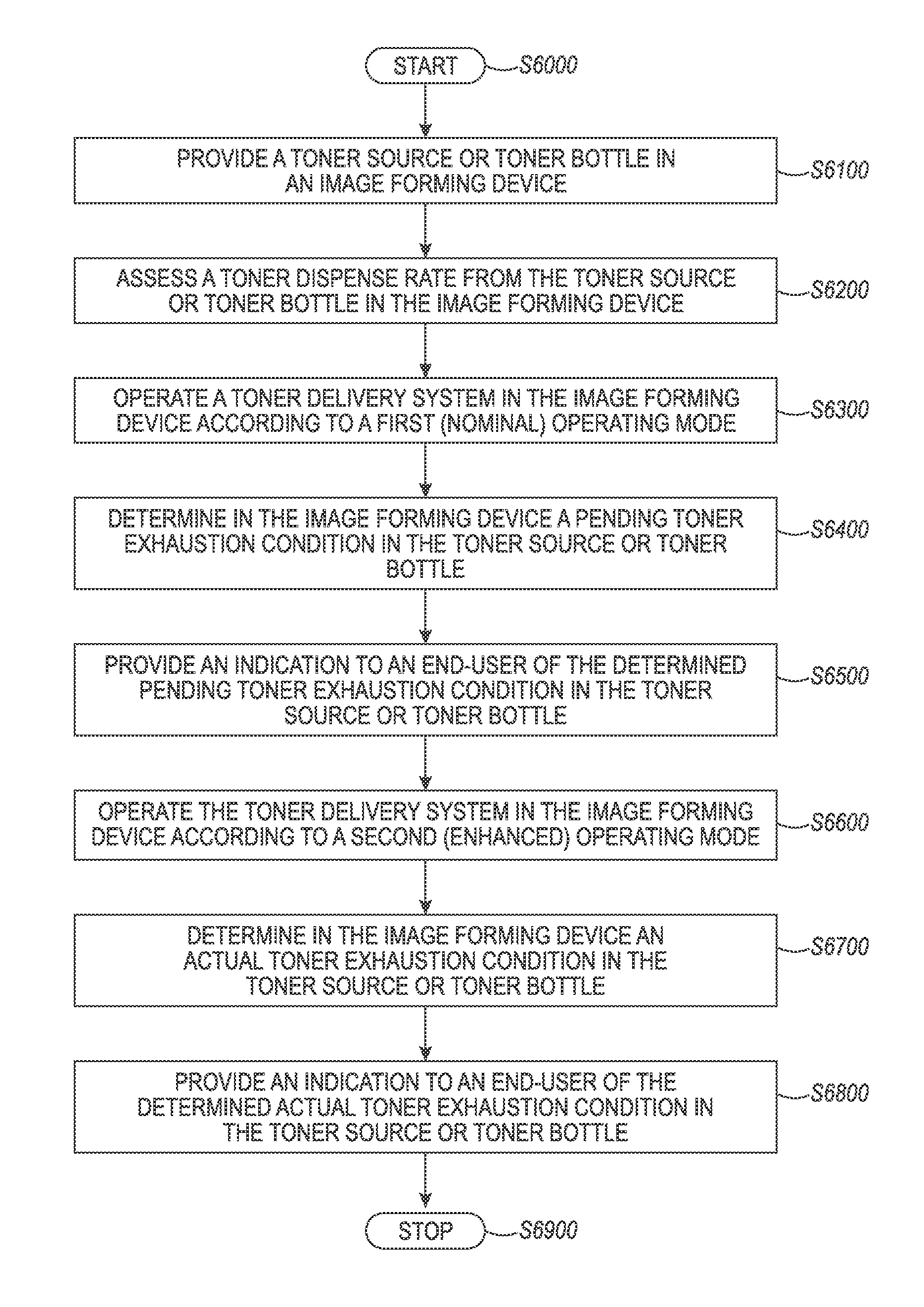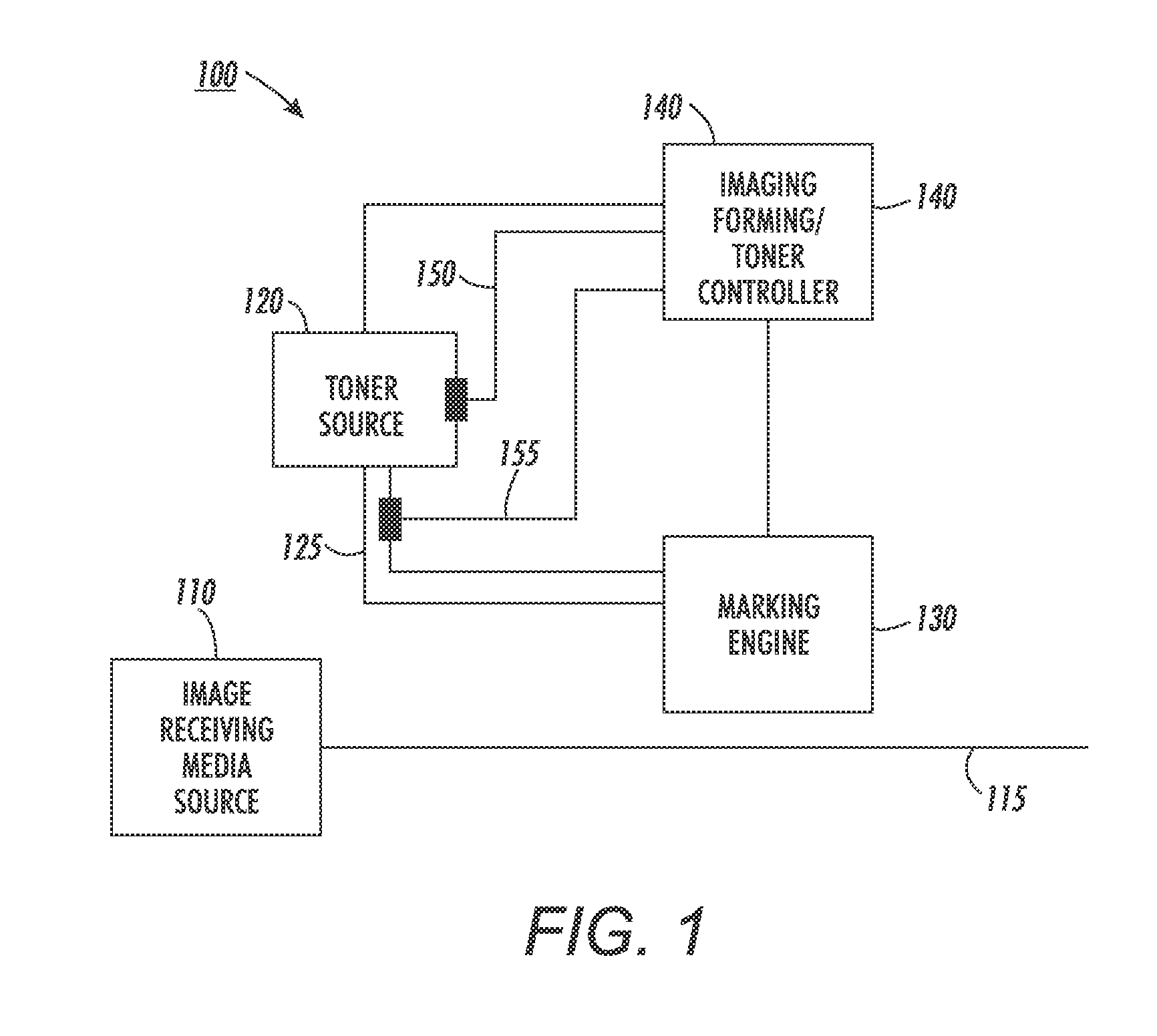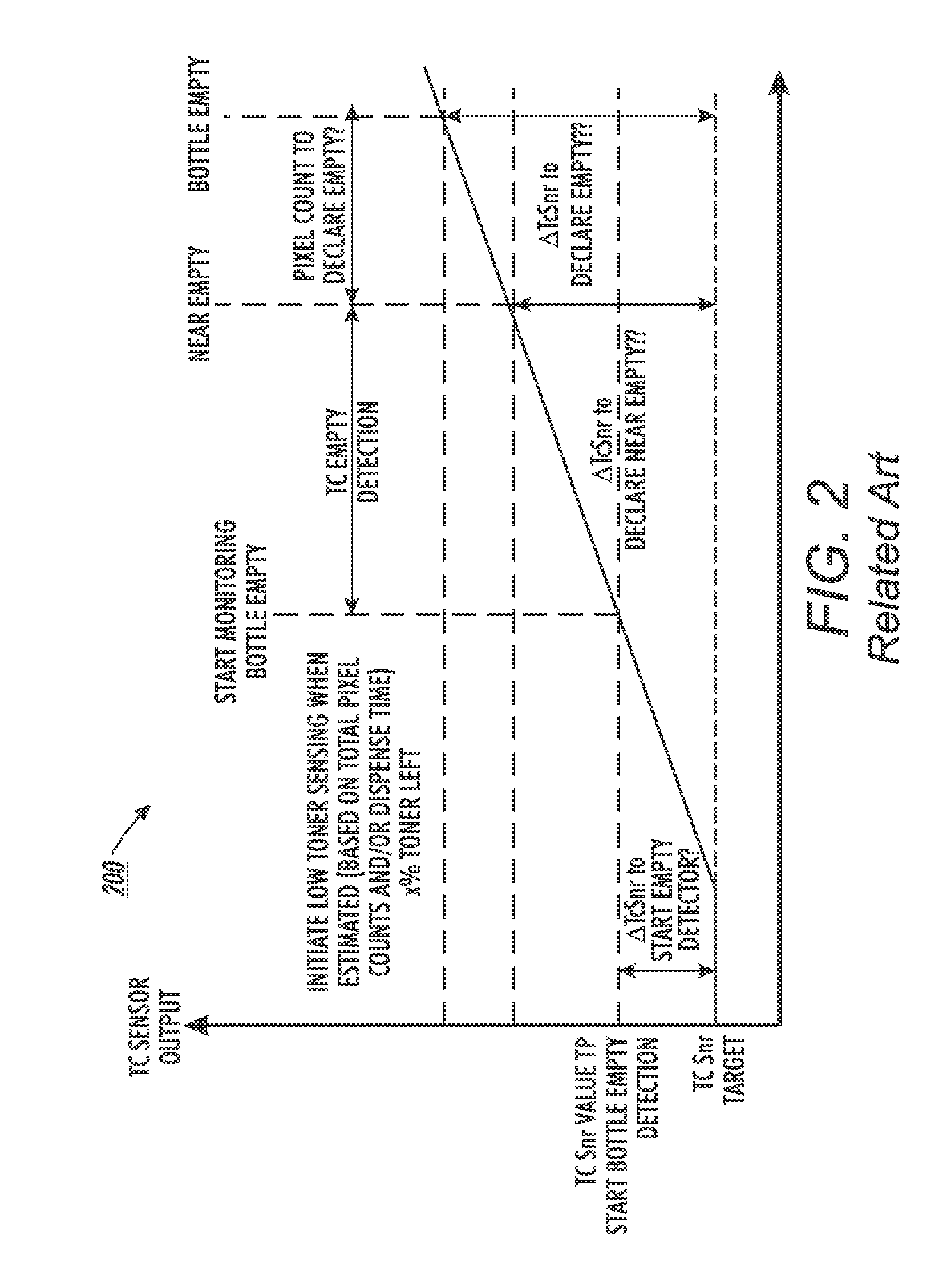Systems and methods for implementing advanced toner dispensing and emptying of toner cartridge components in image forming devices
a technology of image forming device and toner cartridge, which is applied in the direction of electrographic process apparatus, instruments, optics, etc., can solve the problems of poor image quality for remaining images, customers and/or end users' dissatisfaction, and difficulty in achieving equal dissatisfaction, so as to increase the gain of toner material transport, enhance the effect of toner control and increase the dispense time control
- Summary
- Abstract
- Description
- Claims
- Application Information
AI Technical Summary
Benefits of technology
Problems solved by technology
Method used
Image
Examples
Embodiment Construction
[0002]This disclosure relates to systems and methods for facilitating more complete toner emptying from nearly-depleted toner bottles while maintaining image quality in toner-based image forming devices.
[0003]2. Related Art
[0004]Certain image forming devices use charged toner particles as the marking material for image forming on image receiving substrates. The term “toner” generally refers to a powder-like particle material used as the marking material in image forming devices such as xerographic image forming devices and photocopiers to form printed text and images on image receiving substrates.
[0005]Toner is typically packaged in containers of differing sizes, shapes and compositions. These containers are often injection or blow molded container products. The containers may be generically referred to as “toner cartridges” or “toner bottles.” Toner cartridges or bottles are most often formed as closed containers in which the toner material is conveniently packaged for supply to cu...
PUM
 Login to View More
Login to View More Abstract
Description
Claims
Application Information
 Login to View More
Login to View More - R&D
- Intellectual Property
- Life Sciences
- Materials
- Tech Scout
- Unparalleled Data Quality
- Higher Quality Content
- 60% Fewer Hallucinations
Browse by: Latest US Patents, China's latest patents, Technical Efficacy Thesaurus, Application Domain, Technology Topic, Popular Technical Reports.
© 2025 PatSnap. All rights reserved.Legal|Privacy policy|Modern Slavery Act Transparency Statement|Sitemap|About US| Contact US: help@patsnap.com



